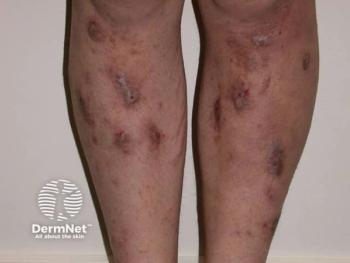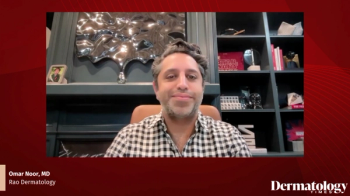
New laser technique yields better results with fewer side effects
Bipolar RF energy skin resistance to preheat the targeted area for the subsequent selective heating by the optical energy.
According to Neil Sadick, M.D., treatments with this new technique will be as effective as traditional laser procedures, but the side effects will be fewer.
"We've been involved in the development of this new technology for some time now," says Dr. Sadick, who has a private practice in New York City and is clinical professor of dermatology at Weill Medical College of Cornell University.
"This new technique uses a dual approach, with the RF heating the outside and the light targeting the affected area. Basically, this technique uses less light energy, which means less scarring, less pain and less downtime for the patient," Dr. Sadick tells Dermatology Times.
"It's significantly safer than other laser treatments, less painful and is very beneficial in diminishing the signs of early wrinkles as well as in correcting problems with leg veins."
It is the latter condition for which Dr. Sadick, a member of the American Society for Dermatologic Surgery, co-authored a study (along with Mario A. Trelles, M.D., Ph.D.) to investigate the safety and effectiveness of Polaris LV, an ELOS-based system developed by Israel-based Syneron Medical Ltd.
Promising results
In the research study, 50 women with red or blue leg veins (of between 1 mm and 4 mm in diameter) were treated with the Polaris LV system. Each patient received up to three treatment sessions at two- to four-week intervals. Two months following final treatment, the patients and an independent physician, with the help of pre- and post-treatment photos, evaluated the extent to which there was blood vessel clearance.
In addition, 40 of the patients were the subjects of a computer-generated assessment to determine vessel clearance, while biopsy specimens were taken from 20 patients for histological assessment.
The results of the study show that about three-quarters of the subject patients experienced vessel clearance of about 50 percent, while 30 percent experienced 75 to 100 percent vessel clearance.
Those patients assessed via the computer-generated tool showed a similar result. The histological assessment demonstrated signs of coagulation and prominent endothelial degeneration in all the treated vessels, but the epidermis remained normal. All assessments revealed minimal complications, despite the fact that no anesthesia or compression dressings were used.
Keys to success
According to the study, the key to success of the ELOS technique in treating leg veins is that the RF energy is preferentially absorbed by the targeted vessels due to both the increased tissue temperatures produced by the diode laser and the fact that blood has a high electrical conductivity. Through the combined heat of both the diode and the RF current, the targeted blood vessel reaches a temperature level that causes it to shrink irreversibly or, in some cases, be destroyed altogether.
"In the near future," Dr. Sadick says, "ELOS-based laser treatment will be the gold standard in the treatment of conditions associated with aging, such as wrinkles and leg veins."
Newsletter
Like what you’re reading? Subscribe to Dermatology Times for weekly updates on therapies, innovations, and real-world practice tips.


















